Last Updated on November 14, 2023
Urine on bathroom walls is a major hassle to clean. It creates an unpleasant odor and can lead to bacteria growth, cause discoloration and eat away at the wall surfaces, and even spread infectious diseases.
While some cases are easier than others, knowing how to clean urine off bathroom walls properly will help you prevent these issues from occurring. From baking powder and white vinegar to specialized stain-lifting sprays and gels, you have options for cleaning up this mess.
We’ll share four smart ways of tackling this nuisance and making your washroom velvety clean.
How To Clean Urine Off Bathroom Walls Without Damaging Them?
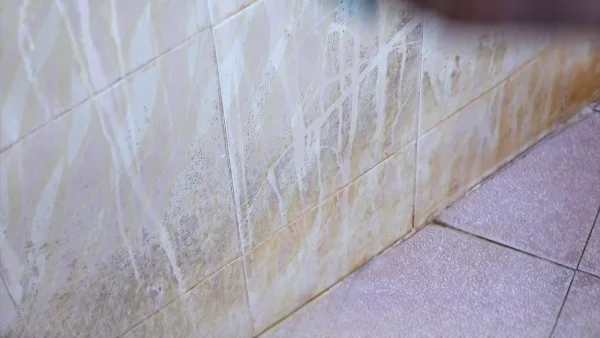
Bathroom walls with urine can be a tricky thing to clean. It’s important that you do your best to get rid of it as soon as possible in order to prevent any potential health hazards, discoloration, and damage to the surface of your walls.
Method 1. White Vinegar with Baking Powder:
Urine on walls can be a difficult and unpleasant problem to deal with, but it is possible to get it off without damaging the walls. With the right combination of cleaning methods, you can effectively remove urine and any accompanying odors from painted walls safely and quickly.
Step 1: Wear Protective Gear and Gather Materials Needed for Clean:
Before attempting to clean any urine stains on painted walls, it’s important to protect yourself first. Put on disposable gloves and protective eyewear before beginning the process of cleaning urine from painted walls.
Gather all necessary materials needed for cleaning, such as liquid dish soap/detergent solution mixture, white vinegar or hydrogen peroxide solution, baking soda, sponges or cloths, and paper towels.
Step 2: Wetting Surface with Soapy Water:
Wet down the affected area with a solution of lukewarm water and liquid dish soap or detergent. If you don’t have soap or detergent, you can wet the wall with fresh water.

Step 3: Scrubbing the Urine-affected Area:
After mixing up the solution, use a sponge or cloth to gently scrub the urine-affected area on the wall in small circular motions. This will help to break up any dried-on residue that has hardened since the accident occurred.
Step 4: Wipe off Any Excess Residue on the Wall:
Once you have finished scrubbing, it’s important to wipe off any excess residue with a damp sponge or cloth before rinsing with warm water and drying with paper towels. This will ensure that no soap film is left behind which could damage your paint job over time.
Step 5: Dab White Vinegar onto the Affected Area:
Pour either solution onto a clean cloth or paper towel and then gently dab it onto the affected area on your wall.
Step 6: Let the Solution Sit and Rinse out any Remaining Residue:
Depending on how badly stained the wall is, you may want to let this sit for 5-10 minutes before scrubbing again using a damp cloth in small circular motions until all traces of urine are gone.
Afterward, thoroughly rinse out any remaining urine residue using lukewarm water before drying everything off with paper towels once more.
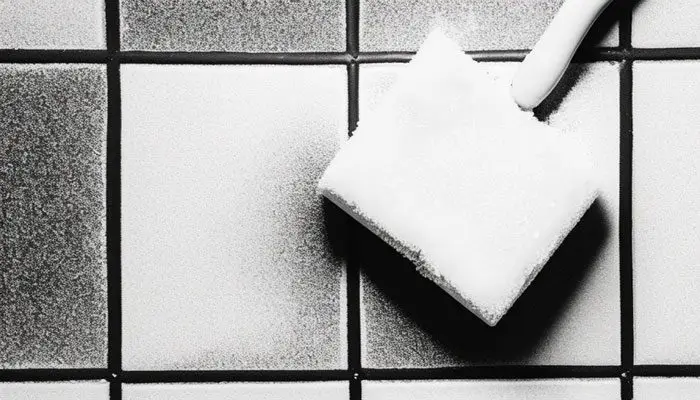
Step 7: Neutralizing Area with Baking Soda:
To use baking soda, simply sprinkle some of it onto the affected area and rub it with your fingers or a soft brush. Baking soda can be used as an effective neutralizer for urine-affected areas on painted walls.
Afterward, wipe off any remaining residue before rinsing it off thoroughly with lukewarm water and drying completely with paper towels.
Method 2. Bleach and Warm Water:
Using bleach and warm water is an effective way to get rid of stains caused by urine on bathroom walls without causing any damage in the process. These natural ingredients are gentle yet powerful enough to do their job without leaving behind any harmful residue.
Step 1: Put on Rubber Gloves:
Put on rubber gloves and safety goggles before beginning the cleaning process. This will help protect you from coming in contact with the bleach and other potentially corrosive substances in the urine.
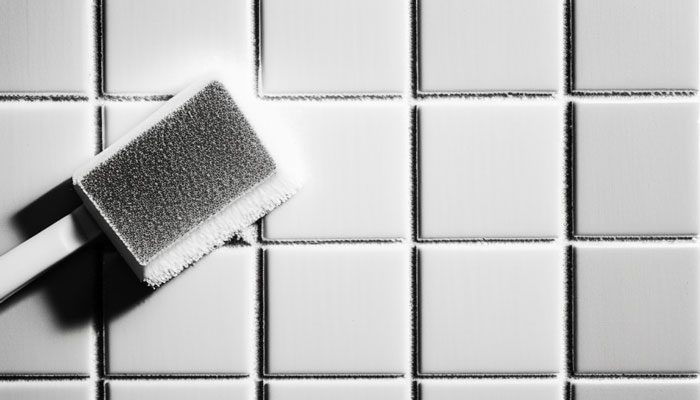
Step 2: Mixing Bleach with Warm Water:
Mix together one part bleach with four parts warm water in a bucket or spray bottle. Make sure that all of the ingredients are thoroughly combined before using them for cleaning.
Step 3: Spraying or Applying the Cleaning Solution:
Spray or apply the solution onto the urine-stained area using a sponge, cloth, or brush. Allow it to sit for about 15 minutes before scrubbing it gently with a soft cloth or brush.
Step 4: Wiping Down the Surface:
Wipe down the surface with a clean damp cloth to remove any residues left behind by the bleaching solution. If there are still traces of urine, repeat steps three and four until they have been completely removed.
Step 5: Rinsing off Any Remaining Residue:
Rinse off any remaining residue by spraying warm water onto the affected area and wiping it down with another damp cloth or towel. Allow everything to dry completely before reapplying sealant if necessary.
Method 3. Ammonia Solution with Baking Soda:
Cleaning up urine with ammonia solution provides a convenient and effective way of restoring the wall’s original condition by breaking down and removing unwanted stains. The following steps offer detailed instructions for getting urine off bathroom walls safely and thoroughly with an ammonia solution.
Step 1) Ensure Proper Ventilation:
Begin by ensuring that your bathroom is well-ventilated, as ammonia has a strong smell and should not be inhaled. Open windows or doors if necessary to improve air circulation.
Step 2) Gather Essential Supplies:
Gather supplies such as rubber gloves, safety glasses, white towels, vinegar, baking soda, liquid dish soap, a scrub brush or sponge, and an ammonia solution. You may opt for an all-purpose cleaner or bathroom cleaner that contains ammonia instead of pure substance if desired.
Step 3) Wear Rubber Gloves and Protective Glasses:
Put on protective gear such as rubber gloves and safety glasses before proceeding with any cleaning techniques to avoid skin irritation or eye damage.
Step 4) Clean the Area with Soapy Water:
Clean the area with warm water and soap or detergent in order to remove any debris, dirt, or other contaminants that may be present. If the urine has been left for a long period of time, you may need to use a scrub brush or heavy-duty cleaner to help break down the stain.
Step 5) Mixing and Creating Ammonia Solution:
Mix together one part of ammonia with four parts of warm water into a spray bottle and apply it generously onto the stained area. Allow it to sit for several minutes before wiping it away with a soft cloth or paper towel.
Note: You may need to repeat this process several times if necessary until the stain is completely gone. Remember not to use too much force when wiping away. Otherwise, you could risk causing damage to your walls.
Step 6) Rinsing off and Patting Dry the Wall:
Afterward, rinse off the wall with warm water and pat dry with a soft cloth. To further protect against any possible staining from future accidents, consider applying wax or sealers onto your walls to better hold up against moisture and urine residue in the future.
Taking these extra precautions will help keep your bathroom walls looking clean and free of stains for more extended periods.
Advanced Stain-Lifting Spray or Gel Products for Removing Stubborn Stains on the Painted Walls
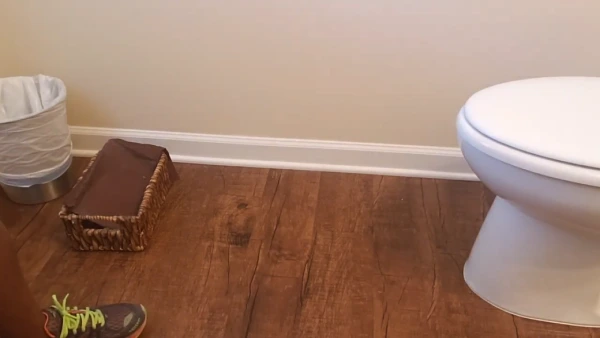
Specialized stain-lifting sprays or gels can help you effectively remove even the most persistent stains from painted walls. Here, we’ll go over how to properly use this type of product to ensure optimal results.
Step 1. Utilizing a Specialized Stain-Lifting Spray or Gel:
Start by selecting a specialized spray or gel designed specifically for removing urine splatter stains from painted walls. Popular cleaning products in this category include Windex, Mr. Clean Magic Eraser, sugar soap, and Lysol wipes.
These should be available at most home improvement stores and grocery stores. After selecting the right product for the job, spray or apply it directly onto the stained spot and let it sit for 5 minutes before wiping away any excess product with a damp cloth.
Step 2. Letting the Spot Sit and Soak in the Spray/Gel:
Once you spray or apply the stain-lifting product on the area, let it sit for at least 5 minutes to soak in and break up any dirt and grime embedded in the paint. Consider using a plastic bag filled with hot water overtop of the pee stain to loosen up any stubborn particles before wiping away excess.
Step 3. Rinse or Wipe Off Residue:
Grab a clean cloth dampened with warm water and gently wipe away any remaining residue left behind by your spray or gel product. If you need to, you can use an old toothbrush to help scrub away any tough marks.
Rinse the area with warm water until all of the cleaning solutions are removed. Then simply allow your wall surface to air dry before assessing whether further cleaning methods are needed.
Does Vinegar Damage Bathroom Wall Paint?
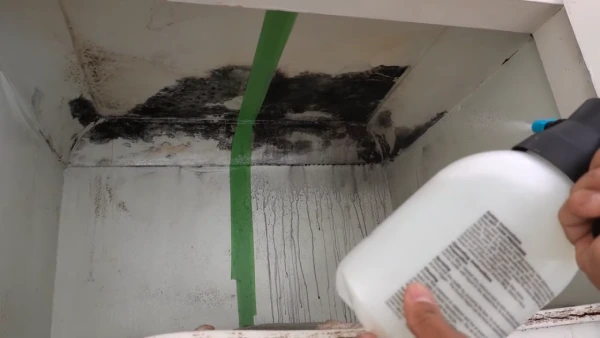
Full-strength white vinegar can damage painted walls due to its acidic properties. When applied directly to the paint, it may cause discoloration, fading, or even bubbling of the paint. This is because the vinegar will react with the chemical components of the paint and create a reaction that can break down the paint layers.
Can You Wipe Painted Walls with Vinegar?
Wiping down painted walls with a diluted solution of vinegar and water is an effective way of safely cleaning painted walls in bathrooms. The acidity level of vinegar makes it ideal for removing dirt and grime buildup from surfaces while also being gentle enough not to damage any existing paint coatings.
Does Vinegar Neutralize Urine Smell on Bathroom Wall?
Yes, vinegar can be used to neutralize urine odor on bathroom walls due to its antimicrobial properties. The acidity in the mixture will work to kill off any bacteria present, thus helping to eliminate the pee smell caused by bacteria growth.
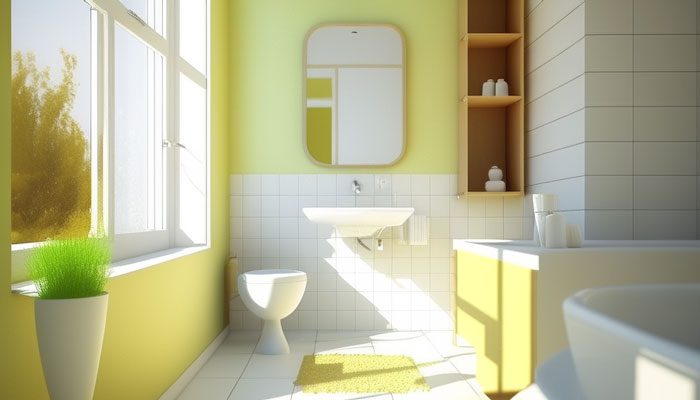
Does Hydrogen Peroxide Remove Urine Stains?
Hydrogen peroxide does a great job at removing both small and large urine stains from bathroom walls as well other hard surfaces like tiles or laminate floorings. Since hydrogen peroxide is an oxidizing agent, it works by breaking down substances found in urine.
Do You Clean Pee with Hot or Cold Water on Bathroom Walls?
When cleaning pee off bathroom walls, it is best to use hot or warm water. This is because the heat helps to break down and dissolve the proteins present in urine, making them easier to remove from surfaces. Using hot water can help to sanitize the area more effectively than cold water.
Does Water Wash Away Urine Splatter Stains on Bathroom Walls?
Water alone will not wash away urine splatter stains from bathroom walls. When removing these types of stains, it is best to use a specialized cleaning product specifically designed for this purpose.
These types of products contain enzymes that work to break down the proteins contained within urine splatters so they can be easily wiped away without leaving any residue behind. A mixture of white vinegar and warm water can also provide an effective cleaning solution for these types of stains.
Does Baking Soda Clean Up Pee on Bathroom Walls?
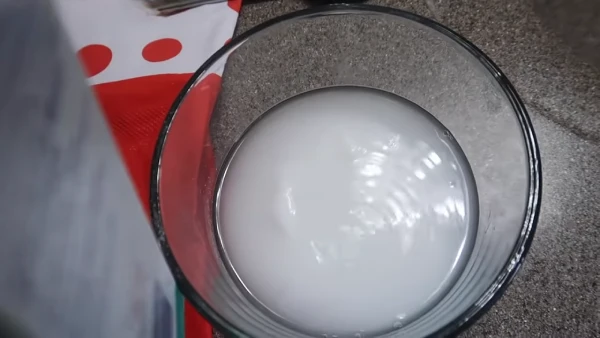
Baking soda can be used to clean up urine on bathroom walls. As well as neutralizing odors and deodorizing surfaces, baking soda helps break down proteins in old urine stains.
Keep Your Bathroom Walls Urine and Bacteria-Free
Removing urine from bathroom walls is an essential part of keeping a healthy home environment. Not only does it reduce the spread of bacteria and infectious diseases, but it also prevents discoloration or damage to the walls themselves.
There are various methods available that you can use depending on the severity of the stain. For less stubborn stains, baking powder and white vinegar or bleach and warm water may suffice. However, if the problem persists, then specialized products such as stain-lifting sprays or gels are likely needed.
If you clean urine off your bathroom walls now, you’ll save yourself money in the future by avoiding expensive replacements and repairs.

